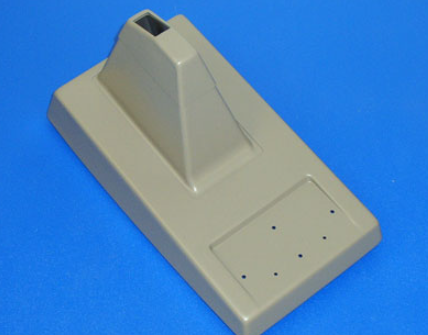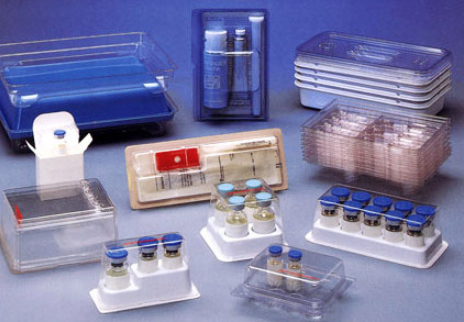Yes, Lexan can be vacuum formed. It’s known for its strength, heat resistance, and flexibility, making it ideal for complex shapes.

Vacuum Forming Process
Vacuum forming, a popular method in the world of plastic fabrication, involves heating a plastic sheet until it becomes soft and pliable. Once heated, the material is stretched over a mold and then subjected to a vacuum. This vacuum ensures that the plastic conforms to the mold’s shape, creating a precise and detailed product. The process is known for its simplicity and cost-effectiveness, making it a favorite in various industries for producing lightweight, strong components.
Basic Principles of Vacuum Forming
- Heating the Plastic: The plastic sheet is uniformly heated using heaters, bringing it to a temperature where it becomes formable. This temperature varies based on the type of plastic used.
- Molding Process: Once heated, the plastic is quickly moved to the mold. The mold’s design is crucial, as it directly impacts the final product’s shape and detail.
- Applying Vacuum: A vacuum is then applied to the space between the plastic sheet and the mold. This removes air and forces the plastic to conform tightly to the mold.
- Cooling and Release: After the plastic has shaped to the mold, it is cooled. Cooling solidifies the material, retaining the mold’s shape. Once cooled, the product can be removed from the mold.
Materials Suitable for Vacuum Forming
Different plastics offer various properties, making them more or less suitable for vacuum forming. Some commonly used materials include:
- Acrylic (PMMA): Known for its clarity and resistance to UV light. Ideal for applications requiring transparency.
- Polystyrene (PS): Lightweight and easy to form, but brittle. Often used in disposable packaging.
- ABS (Acrylonitrile Butadiene Styrene): Offers a balance between rigidity, impact resistance, and surface quality. Used in automotive and consumer electronics.
- Polyethylene (PE): Known for its toughness and resistance to chemicals. Used in industrial components and containers.
- Polycarbonate (Lexan): Exceptionally strong and impact-resistant. Suitable for applications requiring durability.
Lexan and Vacuum Forming
Lexan, a brand name for polycarbonate, is a thermoplastic known for its strength, durability, and versatility. It’s a popular choice in various industries, from automotive to consumer products, due to its unique properties. When it comes to vacuum forming, Lexan exhibits a distinctive behavior compared to other plastics, making it both a preferred and challenging material for specific applications.
Compatibility of Lexan with Vacuum Forming
- High Impact Resistance: Lexan’s ability to withstand significant impacts makes it ideal for products that require durability.
- Excellent Clarity: For applications requiring transparency, like visors or windows, Lexan maintains clarity even after forming.
- Heat Resistance: Lexan can withstand higher temperatures, making it suitable for applications exposed to heat.
- Flexibility in Design: Its flexibility allows for creating complex shapes and detailed designs through vacuum forming.
Despite these advantages, working with Lexan in vacuum forming requires careful consideration of its properties, such as its tendency to warp under heat and its sensitivity to certain chemicals.
Challenges and Solutions
- Warping During Heating: Lexan can warp if unevenly heated. To counter this, ensure uniform heat distribution during the heating phase.
- Scratch Sensitivity: While Lexan is durable, it can be prone to scratches. Applying a protective film during the forming process can help mitigate this issue.
- Chemical Sensitivity: Certain chemicals can cause Lexan to crack. It’s important to use compatible mold release agents and avoid harsh chemicals during cleaning.
- Cost Considerations: Lexan is generally more expensive than other thermoplastics. However, its longevity and strength can offset initial costs in the long term.
Comparative Analysis
Comparing Lexan to other plastics in vacuum forming is essential to understand its efficiency and durability. This comparison highlights the unique characteristics of Lexan and how they stack up against other commonly used plastics.
Lexan vs Other Plastics in Vacuum Forming
- Impact Resistance: Lexan offers superior impact resistance compared to plastics like PVC or acrylic. This makes it ideal for applications where durability is crucial.
- Heat Resistance: Lexan withstands higher temperatures than many other plastics like PETG or polystyrene, reducing the risk of deformation under heat exposure.
- Flexibility and Strength: While materials like ABS also offer good strength, Lexan typically outperforms in terms of flexibility, making it suitable for more complex shapes.
- Optical Clarity: For projects requiring clear visibility, Lexan provides better clarity than opaque materials like HDPE or polypropylene.
- Chemical Resistance: Compared to PVC, Lexan has better resistance to certain chemicals, though it’s more sensitive than materials like polyethylene.
Each material has its specific advantages. For instance, ABS is often cheaper than Lexan but doesn’t match its impact resistance. PVC offers excellent chemical resistance but isn’t as clear or heat resistant as Lexan.
Efficiency and Durability
- Manufacturing Efficiency: Lexan sheets heat up more quickly than materials like acrylic, potentially speeding up the vacuum forming process. However, its sensitivity to scratches might require additional handling care, which could add to the production time.
- Longevity: Lexan products generally have a longer lifespan due to their high impact and heat resistance. This durability can be a cost-effective choice in the long term, despite the higher initial material cost.
- Cost-effectiveness: While Lexan is more expensive per unit than many plastics, its durability means products may not need to be replaced as frequently, offering long-term savings.
- Environmental Impact: In terms of environmental sustainability, Lexan can be recycled, similar to other plastics like PETG and ABS, but recycling processes vary in complexity and efficiency.

Case Studies: Lexan in Vacuum Forming
Lexan’s unique properties have led to its widespread use in various industries. Its impact resistance, clarity, and heat resistance make it an excellent material for both industrial applications and innovative design uses.
Industrial Applications
- Automotive Components: Lexan is widely used in the automotive industry for parts like headlight covers and instrument panels. Its impact resistance ensures durability in harsh conditions, while its clarity is crucial for lighting components.
- Medical Device Manufacturing: In medical devices, Lexan’s strength and safety profile (being non-toxic) make it ideal. It’s used in items like durable medical equipment housings and sterile containers.
- Protective Gear: Due to its high impact resistance and clarity, Lexan is a preferred material for protective gear such as face shields and safety goggles.
Each application takes advantage of Lexan’s specific properties. For example, in the automotive sector, Lexan’s resistance to high temperatures and impacts ensures longevity and safety of components.
Innovative Uses in Design
- Architectural Applications: Lexan’s clarity and strength have led to its use in architectural elements like skylights and security glazing. Its ability to be vacuum formed into complex shapes allows for innovative design possibilities.
- Consumer Electronics: In consumer electronics, Lexan is used for components like smartphone screens and laptop cases, where its scratch resistance and durability are key.
- Art Installations: Artists have also utilized Lexan for its aesthetic and physical properties, creating installations that leverage its transparency and strength.




